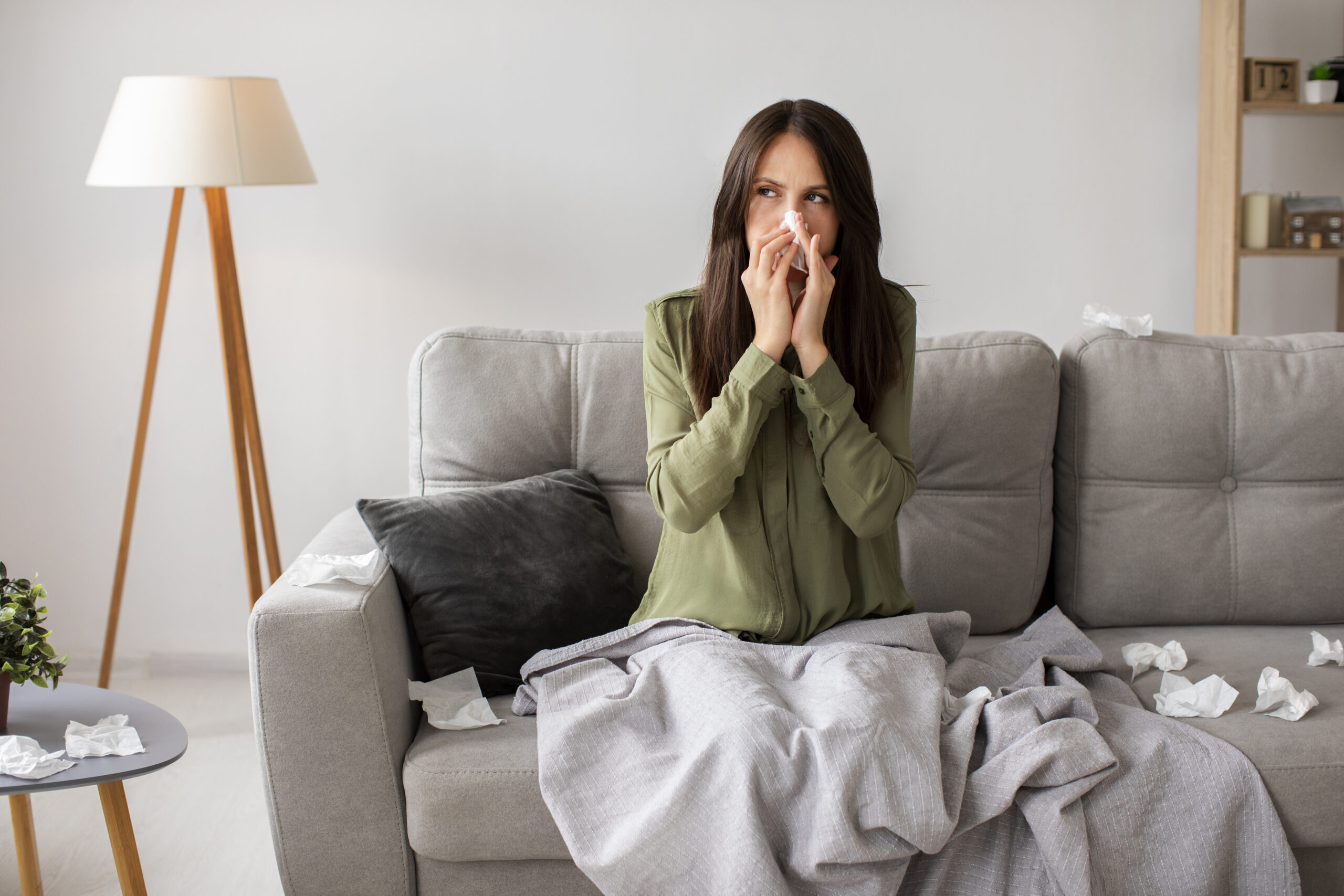Is Your HVAC System Making Your Fall Allergies Worse?
Home » HVAC Blog Articles » Is Your HVAC System Making Your Fall Allergies Worse?

Maintaining clean indoor air is important for your health, especially as we spend more time indoors during the colder months. As the weather cools off, many people are turning up their thermostats to fight off the chill. But for some, that first blast of soothing hot air may bring with it coughing, sneezing, and itching eyes—almost like it’s pollen season all over again! What’s going on?
How Can Your HVAC System Cause Worsening Fall Allergies?
It may not be the first thing that you think of, but your HVAC system could be making your fall allergies worse. Mold spores, ragweed, and mildew tend to peak during the fall months, with increased exposure often leading to heightened allergy symptoms. The CDC states “About one quarter (25.7%) of adults have a seasonal allergy.” Although these allergens originate outdoors, your HVAC system pulls in outside air and can inadvertently circulate them inside your home.
Once inside, allergens can accumulate in various parts of the system, only to be recirculated once you turn the heat on in the fall. Here’s how:
Dirty Air Filters
Your HVAC system continuously circulates air throughout your home, with the air filter playing a crucial role in keeping that air clean and free of pollutants and allergens. However, over time, if the air filter isn’t changed regularly, it can become dirty and clogged, reducing its effectiveness.
A dirty air filter not only puts extra strain on your HVAC system, leading to higher energy consumption and increased utility bills, but it also recirculates trapped dust, dander, pollen, and mold spores back into your living space, lowering indoor air quality. You go inside seeking some fall allergy relief only to find that the air in your home is worsening your symptoms.
It’s recommended to change your HVAC filter every 90 days, depending on factors such as the type of filter, the presence of pets, allergies, or how often you use the system. Homes with pets or allergy sufferers may need to change the filter more frequently—around every 30 to 60 days—to maintain optimal air quality and system efficiency.
Uncleaned Ducts
Since your HVAC system circulates air throughout your home, anything in the air—such as dust, pollen, or debris—also moves through your ducts. During the summer months, when the system is often not in use, these particles can accumulate inside the ducts through natural air currents. When you turn the system back on in the fall, all that built-up dust and allergens are released into your home along with the airflow. This increased exposure can worsen fall allergies. Scheduling regular duct cleaning helps to remove the accumulated debris and allergens, improving your indoor air quality and reducing allergy symptoms.
Get A Fall Tune-Up
Regular HVAC tune-ups play a significant role in enhancing the air quality in your home. During a tune-up, technicians clean and replace dirty air filters, inspect ducts, and remove dust, mold, and allergens that may have built up in the system. This process ensures that the air circulating through your home is cleaner and free from harmful pollutants like dust, dander, and mold spores. By keeping your system in top condition, tune-ups help reduce the presence of airborne irritants, creating a healthier, more comfortable indoor environment for you and your family.
Don’t Suffer from Fall Allergies – Get Clean Indoor Air with Bowman Heating and Cooling!
The good news is that you don’t have to suffer from HVAC-induced fall allergies! At Bowman Heating and Cooling, we know HVAC maintenance like the back of our hands. Contact us today to schedule a tune-up of your system for the fall, and breathe easy during these following cold months with the knowledge that you can stay warm without worrying about what’s in the air.
